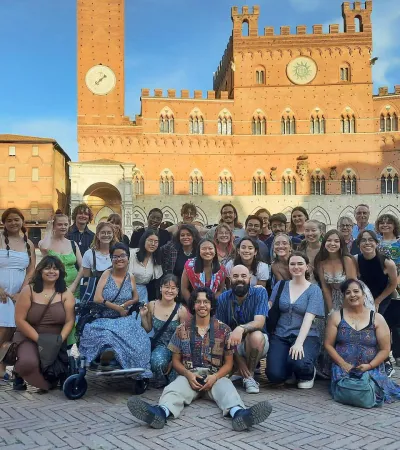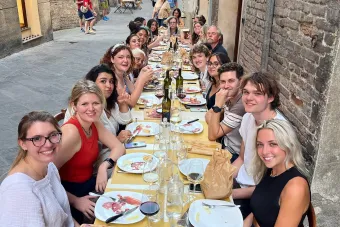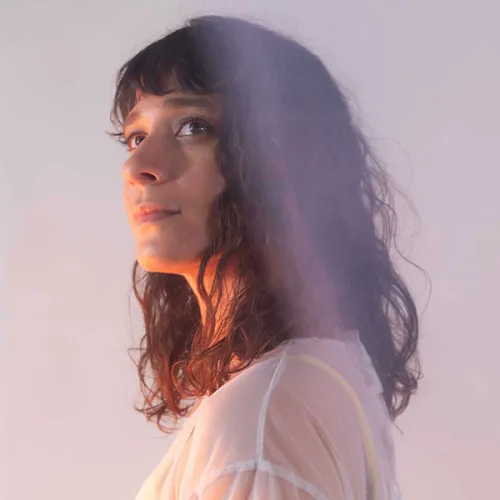
Learning Tuscany: Art and Culture in Central Italy
In Italian culture, life and art are inseparable. Countless examples illustrate this: the still-life quality of window displays in Florence, the artisanal care taken by a Sienese stoneworker replacing part of a medieval byway, the sculpted harmony of the Tuscan countryside. We cannot experience these essential qualities of Italian life in a classroom. Only with time and careful observation can we begin to absorb the richness and rhythm of life and art in Italy.
This summer program focuses on the art and architecture of Tuscany and central Italy. Students live and work in the beautiful Tuscan town of Siena, one of Europe’s most important cities in the middle ages and Renaissance. Contemporary Siena is home to a major university and is rich in cultural traditions, including Siena’s famous Palio horserace. From Siena, students can travel by train or bus to Florence, Rome, and other scenic sites in Tuscany.



Students enroll in an art history course and a studio art course taught by faculty from the Department of Art and Art History at The University of Texas at Austin. These courses focus on art and experience. How do we as contemporary viewers experience art of the past? How can daily observations, whether through drawing, print, painting, photography or sculpture, help inform and enrich this experience? Group discussions and visits to other cities, such as Florence and Rome, serve to frame student experiences within a broader view of Italy. The integrated approach of the program balances carefully designed trips with individual and small-group projects in order to explore the forces that shaped Italian cities and landscapes.
Students explore myriad ways of seeing the significance of Tuscany through careful collaborations by two University of Texas at Austin faculty members who focus on the art and art history of the region of Tuscany.
Dates
Program Dates
June 4 – July 11, 2026
Application Deadline
December 1, 2025
Program Faculty and Courses
Holy Ground: Art and Pilgrimage in Medieval and Renaissance Italy
ARH 331J
(VAPA)
Why did people travel in the Middle Ages and Renaissance Italy? How were these journeys reflected in art and architecture, whether as portable objects (small altarpieces), illustrated books and manuscripts, narratives of journeys, pilgrimage churches (such as San Domenico and the Ospedale of Santa Maria della Scala in Siena), or large-scale paintings of experienced or spiritual travel, such as Ambrogio Lorenzetti’s Good Government frescoes in Siena? And how different was the medieval pilgrim, collecting her religious tokens along a pilgrimage route, from today’s cultural “pilgrim”, who might collect T-shirts, post-cards, or even countries themselves? Italy has long been a destination for travelers of every ilk: foreign merchants, religious pilgrims, travelers in seek of adventure, and cultural enthusiasts. In the Middle Ages and Renaissance, the economies of Siena, Florence, and Rome were greatly enriched by both religious pilgrims and lay travelers, resulting in the spectacular development of art and architecture that we know today. In this course, we will explore the notion of pilgrimage in the art and architecture of central Italy, through reading, discussion, site visits, presentations, and post-field trip analyses. While we will study and visit the great, canonical works of central Italy, we will also explore smaller and more personal elements of material culture, including relics, small paintings, and modest churches and hospitals. Throughout, we will use the issue of travel and pilgrimage as a prism with which we can focus our explorations.
Sound, Action, and The Artist’s Book
ART 319T / ART 352J / ART 379T
This course uses travelling as an impetus to actively respond to a new landscape. We will use sound, action, drawing, and bookmaking to find presence within the existing and ancient architecture of Siena, Florence, and Rome. As travelling is a multi-sensorial experience, so will our materials, processes, and products. Most work will be experiential and time-based, with our residue being captured as site-specific books, a collective sound bank, and experiential soundwalks and tours.
Department Scholarships
Are you a student in the Department of Art and Art History (majoring in Art Education, Art History, or Studio Art) and considering Learning Tuscany? Department scholarships are available for participation in the summer 2026 program. See below for scholarship details and how to apply.
APPLICATION DEADLINE
December 1, 2025
Next Steps
Questions?
Dr. Ann Johns — Art History professor / Program Director
acjohns@austin.utexas.edu
Will answer these kinds of questions: specifics and suggestions about travel, specific information about Rome and Siena, anything about the art, history and culture of Italy, packing suggestions, general questions about most aspects of the program, deadlines, departmental scholarships
Hannah Spector — Studio Art professor
spectorstone@utexas.edu
Will answer these kinds of questions: all questions about supplies and classes, general questions about travel in Italy, Studio Art scholarships
Katelyn Catino — Program Coordinator, Education Abroad
katelyn.catino@austin.utexas.edu
Will answer these kinds of questions: all questions about non-departmental scholarships, forms (medical and otherwise), deadlines



